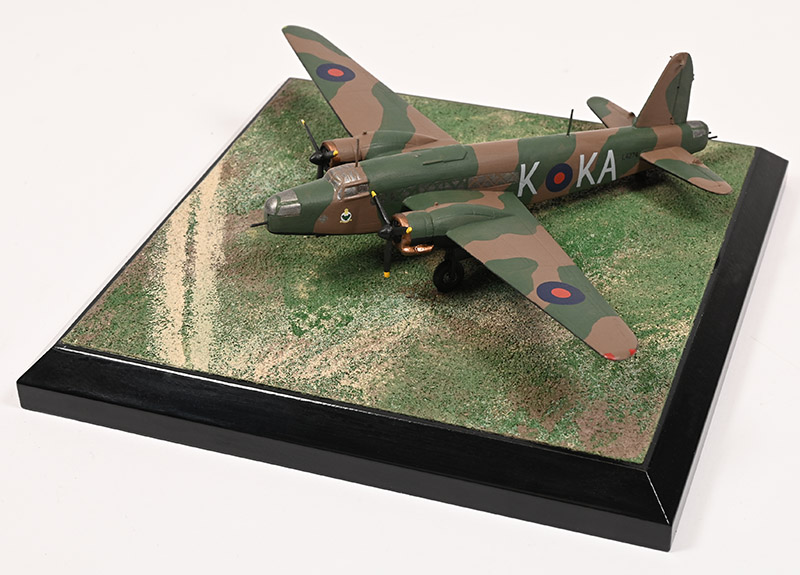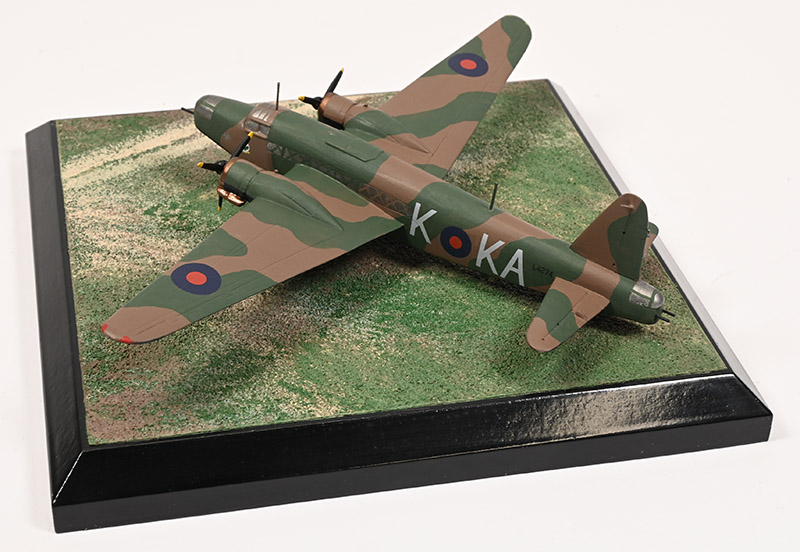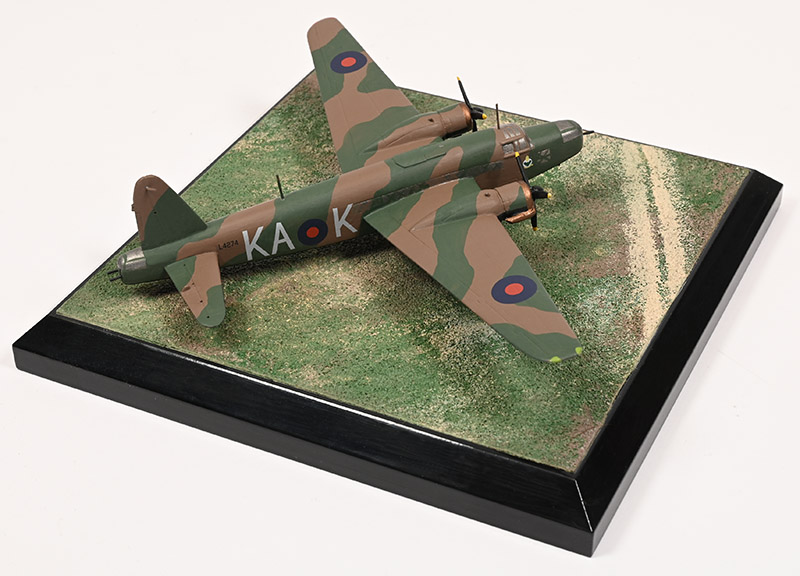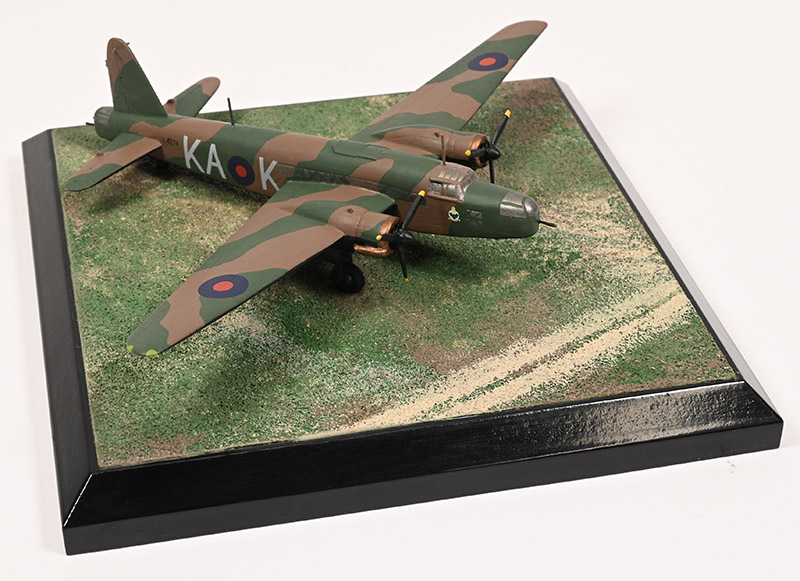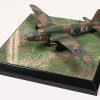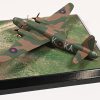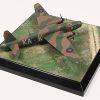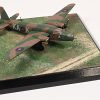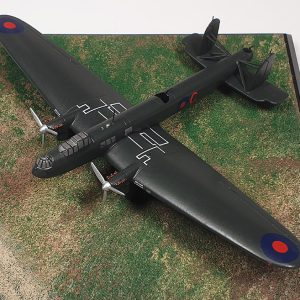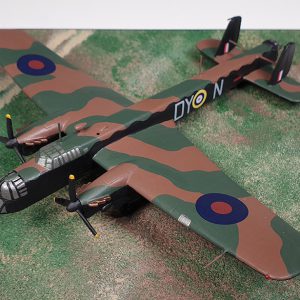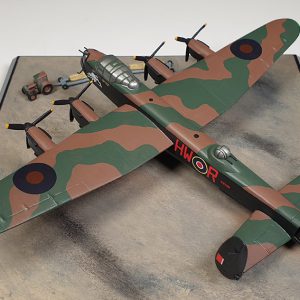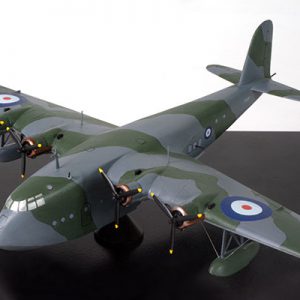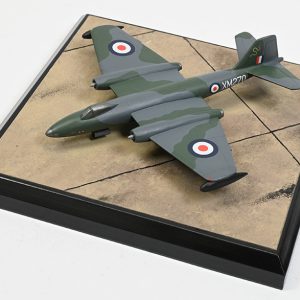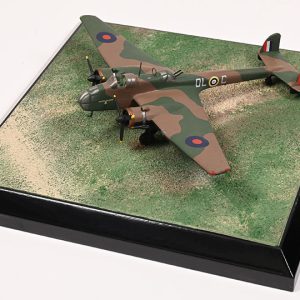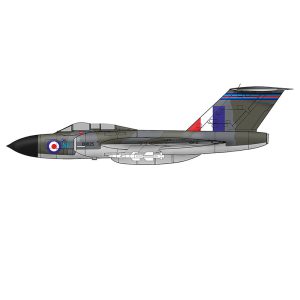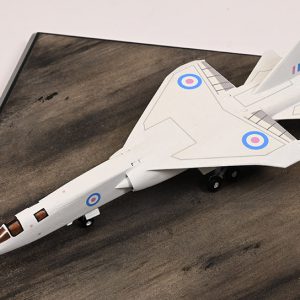Vickers Wellington Mk I, L4274, KA-K
9 Squadron, RAF Stradishall, England, August 1939
The Vickers Wellington stemmed from Air Ministry Specification B9/32 which called for a twin-engine ‘heavy’ bomber. Designed by Vickers-Armstrong’s R. K. Peterson, a method of geodetic construction devised by Barnes Wallis was used giving the fuselage an ability to withstand tremendous damage with little weight penalty. The prototype, called the Crecy, first took to the air on 15th June 1936 with chief test pilot Mutt Summers at the controls. Following revised Specification B29/35, the first true Wellington took to the air just before Christmas 1937 and an initial order for 180 aircraft was placed shortly thereafter.
The Wellington constituted a major leap forward for the RAF in terms of both armament and payload. The Mk I was powered by two 1,000 hp (750 kW) Bristol Pegasus XVIII radial piston engines, its basic armament comprised 2 x .303 in Browning machine guns in front and rear turrets and it could carry a bomb load of 4,500 lb (some three times greater than the Heyford it was to replace). The Wellington entered RAF service with No 99 Squadron at RAF Mildenhall, in October 1938 and by September 1939 equipped a further seven front-line squadrons. 183 Mk I’s were built at Weybridge and Broughton in Flintshire.
9 Squadron’s life as a bomber unit began on 1st April 1924, reforming at RAF Upavon, quickly moving to RAF Manston, with the Vickers Vimy. Less than a year later, the squadron re-equipped with the Vickers Virginia heavy bomber, occasionally supplemented by Vickers Victoria transports, which it retained until these were replaced by the Handley Page Heyford in 1936. The squadron badge was approved by King Edward VIII in 1936, one of the few to be introduced during his short reign. The badge reflects the squadron’s development as a specialised night-operations unit, and is a gentle leg-pull at the expense of of Air Marshal Hugh Trenchard, who once famously remarked “Only bats and bloody fools fly at night!” The squadron emblem is accordingly a bat, with the motto that translates from the Latin as “We Fly by Night”.
At the outbreak of World War II, the Wellington was principally involved in daylight operations and, on 4th September 1939, 14 aircraft from Nos 9 and 149 Squadrons were in action against the German fleet at Brunsbüttel. The two aircraft shot down on this raid became the first aircraft lost on the Western Front. Anti-shipping operations continued until December when, after further losses, Wellingtons were switched to the night bombing task. Many variants of the Wellington were built during its career and it also served with RAF Coastal, Transport and Training Commands and the air arms of nine other countries. 11,464 Wellingtons built in total.
L4274 was a Wellington Mk I aircraft from 9 Squadron, coded KA-K. Vickers turrets in the nose and rear fuselage identify this as an early production aircraft. High quality photographs of the plane flying in formation were taken in 1939. These show L4274 in the prewar/early war bomber command scheme of dark earth/dark green in A scheme configuration with black undersurfaces.
The fate of L4274 is uncertain. The plane was apparently destroyed in a crash landing at Newmarket, England in late August 1939, a few days before the outbreak of World War II.


